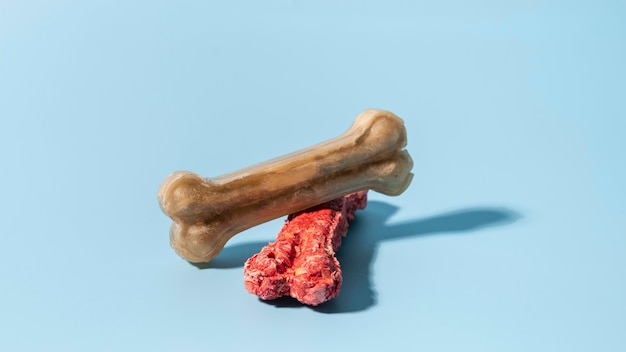When it comes to selecting the right treats for your dog, it’s crucial to consider both nutritional value and safety. Pork femur bones, a natural and flavorful treat, have become a popular choice for many dog owners. These bones are not only a great source of protein and calcium but also provide an opportunity for dogs to exercise their chewing instincts. However, like with any dog treat, there are both advantages and risks involved. In this article, we’ll explore the benefits and precautions of using pork femur bones for dogs and help you make an informed decision.
What Are Pork Femur Bones?
Pork femur bones are the bones of the pig’s leg, often sold in pet stores as a natural chew treat for dogs. These bones are typically large, tough, and rich in marrow, which makes them highly appealing to many dogs. As a source of essential nutrients like calcium and phosphorus, pork femur bones can support your dog’s bone health and contribute to their overall well-being. The tough texture also helps keep your dog’s teeth clean by naturally scraping away plaque during chewing.
Health Benefits of Pork Femur Bones for Dogs
One of the key advantages of pork femur bones for dogs is their nutritional value. These bones are packed with essential minerals, including calcium and phosphorus, which are crucial for maintaining strong bones and teeth. Chewing on these bones also provides your dog with an enjoyable and beneficial activity, keeping them mentally stimulated and preventing boredom. Additionally, the marrow inside the bone is high in fat and can serve as a tasty reward for your furry companion, helping to keep them satisfied and content.
The Potential Risks of Pork Femur Bones for Dogs
While pork femur bones offer some benefits, it’s essential to consider the potential risks they pose to dogs. One concern is that these bones can splinter or break into sharp pieces, which can lead to choking or internal injuries. Additionally, bones that are too small or brittle can be easily broken into jagged shards, which could cause serious harm to your dog’s digestive system. Always supervise your dog when they are chewing on a pork femur bone to prevent any potential accidents.
How to Safely Give Pork Femur Bones to Your Dog
To ensure the safety of your dog while enjoying pork femur bones for dogs, there are a few guidelines to follow. First, make sure the bone is an appropriate size for your dog. A bone that is too small can easily be swallowed whole, while a bone that’s too large might be difficult for your dog to chew on effectively. Always choose a bone that is properly cleaned and devoid of any sharp edges. If you notice any signs of damage to the bone, such as cracks or sharp points, it’s time to dispose of it to avoid harm.
Can Pork Femur Bones Replace Regular Dog Food?
Pork femur bones should never be considered a replacement for your dog’s regular diet. While they provide some beneficial nutrients, they do not contain all the essential vitamins and minerals needed for a balanced meal. These bones should only be given as an occasional treat, rather than a daily source of nutrition. It’s important to maintain a well-rounded diet for your dog that includes high-quality commercial dog food or a home-cooked meal, depending on your veterinarian’s recommendations.
Conclusion
Pork femur bones can be an excellent treat for your dog if given in moderation and with proper supervision. They offer nutritional benefits, help clean teeth, and provide mental stimulation. However, they come with risks that must not be overlooked, such as choking hazards and potential digestive issues. By following safety guidelines and choosing the right bone size, you can help minimize these risks and ensure your dog enjoys this treat safely. For further information on choosing the right treats for your dog, visit purposefulpuptreats.com, where you’ll find a variety of options to suit your dog’s health and happiness.

